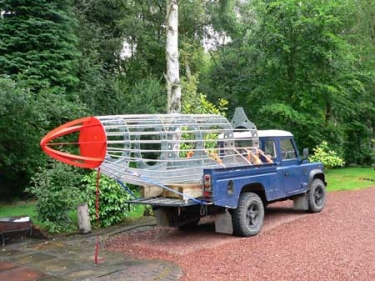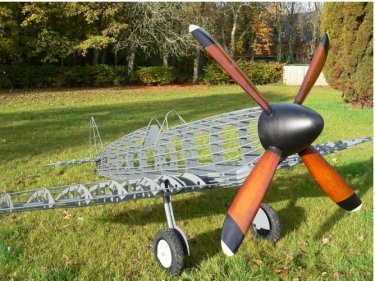Lutman Aero Works Spitfire



Model Spitfires fabricated from steel to celebrate an icon of the skies during WW2, and a grandfather’s legacy.
In just a few weeks’ time, on 3 September, Great Britain will be remembering the day 78 years ago when Neville Chamberlain declared war on Germany and the start of WW2. It was a sad day for the nation, but especially for those who had already lived through the horrors of WW1, which had finished only two decades earlier. Much had changed in terms of military might in 21 years however, including the development of the Spitfire, a “masterpiece of aerodynamic engineering”* and an icon of the skies, especially during the Battle of Britain (July – October 1940).
To celebrate the hard work and success of the Spitfire, and to commemorate RAF airmen and a grandfather’s legacy, an engineering company in Northumberland – Lutman Aero Works – began to fabricate custom built Lutman Spitfire MK XII’s in 2016 as sculptural steel commissions.
Joseph Ash Galvanizing has been proud to provide the galvanized finish for one of these commissions.
Lutman Aero Works – a history
In 1924, the first model shop in the world was opened by Charles W. Lutman in Newcastle-Upon-Tyne. At that time, the North East of England was a hot bed of inventive engineers, and there are even rumours that the Lutman family had attempted flight on Newcastle Town Moor before the Wright Brothers.
In the 1920s, designs for aeroplanes were drawn, and scale models made from balsa wood, which were then tested in wind tunnels, before the full-size aircraft were manufactured and tested. The staff at The Model Shop not only supplied the balsa wood to the Air Ministry for aeroplane models, but they also assisted with the wind tunnel models for the Supermarine Spitfire.
Spitfire commissions
The Lutman family today are proud of their family’s heritage with regards to the Spitfire. Consequently, Lutman Aero Works was born, which today fabricates half-size pole mounted and ground mounted model Lutman Spitfire MK XII’s as memorials, garden sculptures, office features or gate guardians.
The wing ribs and fuselage formers of the models are plasma cut from steel sheet, and the stringers are made using a thick wall steel tube. After fabrication, the front of each airframe is galvanized by Joseph Ash Galvanizing and then powder coated (by another supplier) to marine offshore standards, to prolong the life of the steel and protect it from the elements.
The wings are then attached to the fuselage wing box with marine grade stainless steel fastenings, which helps with transportation and installation.
Andrew Booton from Joseph Ash Galvanizing Telford said: “It is important to commemorate the hard work and sacrifices of people during the World Wars, and to also remember the engineers and the machines that helped to turn the tide of the Wars in Britain’s favour. This is especially the case of the Spitfires which battled against the Luftwaffe over our skies during WW2. The work of Lutman Aero Works and their artistic commissions helps us to remember and preserve our history. It is an honour to treat their steel with metal finishing coatings, in order to preserve their works.”
(* https://www.military-history.org/articles/world-war-2/history-of-the-spitfire.htm)
Next page